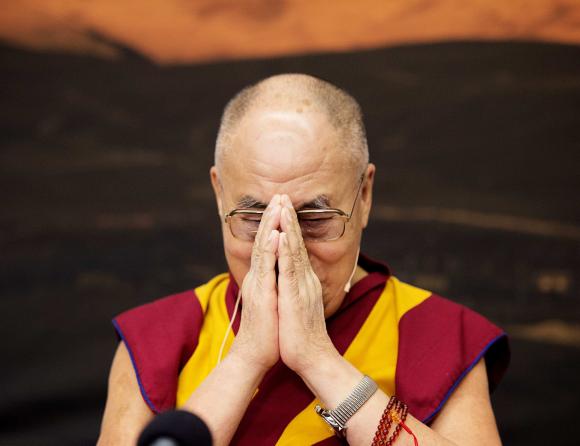A Tibetan monk has died after self-immolating to protest Beijing’s policies in Tibet, the second such death this month. RFA reports:
Jamyang Losal, aged about 22, set himself ablaze at around 5:00 a.m. on May 19 near the People’s Hospital in Kangtsa (in Chinese, Gangcha) county in Qinghai’s Tsojang (Haibei) Tibetan Autonomous Prefecture, a local source told RFA’s Tibetan Service.
“He did not survive his protest,” RFA’s source said, speaking on condition of anonymity
“Losal’s body was taken away by the police, and when his family members went to the police station to claim his remains, the police refused to comply with their request,” he said. [Source]
And from Catherine Lai at Hong Kong Free Press:
Jamyang Losal, who was around 22-years-old, set himself on fire at around 5am on Friday in the Huangnan Tibetan Autonomous Prefecture in the northwest Chinese province of Qinghai.
An unnamed source told RFA that the monk carried out his protest near the Jianzha People’s Hospital to protest the government’s “repressive policies.”
[…] They said that his body had been cremated by the authorities, who refused to hand over the remains to his family.
Jamyang Losal was previously detained for over ten days for sharing a photo of the Dalai Lama on WeChat, the source said. He was a practising monk at Gyerteng Monastery in Jianzha County. [Source]
Chakdor Kyab, a 16-year-old student, died from self-immolation in Gannan Tibetan Autonomous Prefecture of Gansu Province earlier this month. Since 2009, 150 Tibetans have set themselves on fire in protest. One survivor, Lobsang Gyatso, was imprisoned after attempting to self-immolate in 2012, and was recently released after five years in prison. From Molly Lortie at Tibet Post International:
Lobsang Gyatso, now 24-year-old was released from prison on May 10th and allegedly reached his hometown around midnight, according to local sources. However, his current physical condition after his release is still unclear.
Lobsang Gyatso was a 19-year old monk in Kirti Monastery when he self-immolated in protest against the Chinese government on February 13, 2012 on the main street of Ngaba town.
According to eyewitnesses, he shouted slogans of protest against the Chinese government. The special police forces arrived at the scene and doused the fire. He was beaten as they took him away to an undisclosed location.
The source also said, “He was subjected to extreme torture and harassment during the five years and three months he was held in custody.” [Source]
Government efforts to assimilate Tibetans culturally and linguistically, and to eradicate the influence of the Dalai Lama, whom they view as a “splittist,” have led to a deteriorating human rights situation in the region, according to advocacy groups who monitor Tibet. An ongoing debate between Beijing and the Tibetan spiritual leader over who has the right to name the next Dalai Lama may intensify in coming months as the Tibetan exile community expects the Dalai Lama to name his own successor. Previously, the Dalai Lama has said that he may be the last in the line of the institutional leader of Tibetan Buddhism. From Press Trust of India:
“As far as the next Dalai Lama is concerned it’s already on the table and he can come through reincarnation, selection or emanation. These options are on the table but not yet executed,” [President of the Tibetan government-in-exile Lobsang Sangay] said, while speaking at the ‘Indo-Tibet Summit’ organised by the South and East Asia Foundation here.
“He (the Dalai Lama) says that he will decide at the age of 90, but I think it should happen sooner and I think it is likely to happen,” he said.
In reincarnation, one has to die and reborn. Selection is when the high lamas meet and select the Dalai Lama and emanation is when the Dalai Lama designates his own successor before he passes away.
Sangay said that as per the procedure, selection of the next Dalai Lama by China would be “illegitimate”. [Source]








